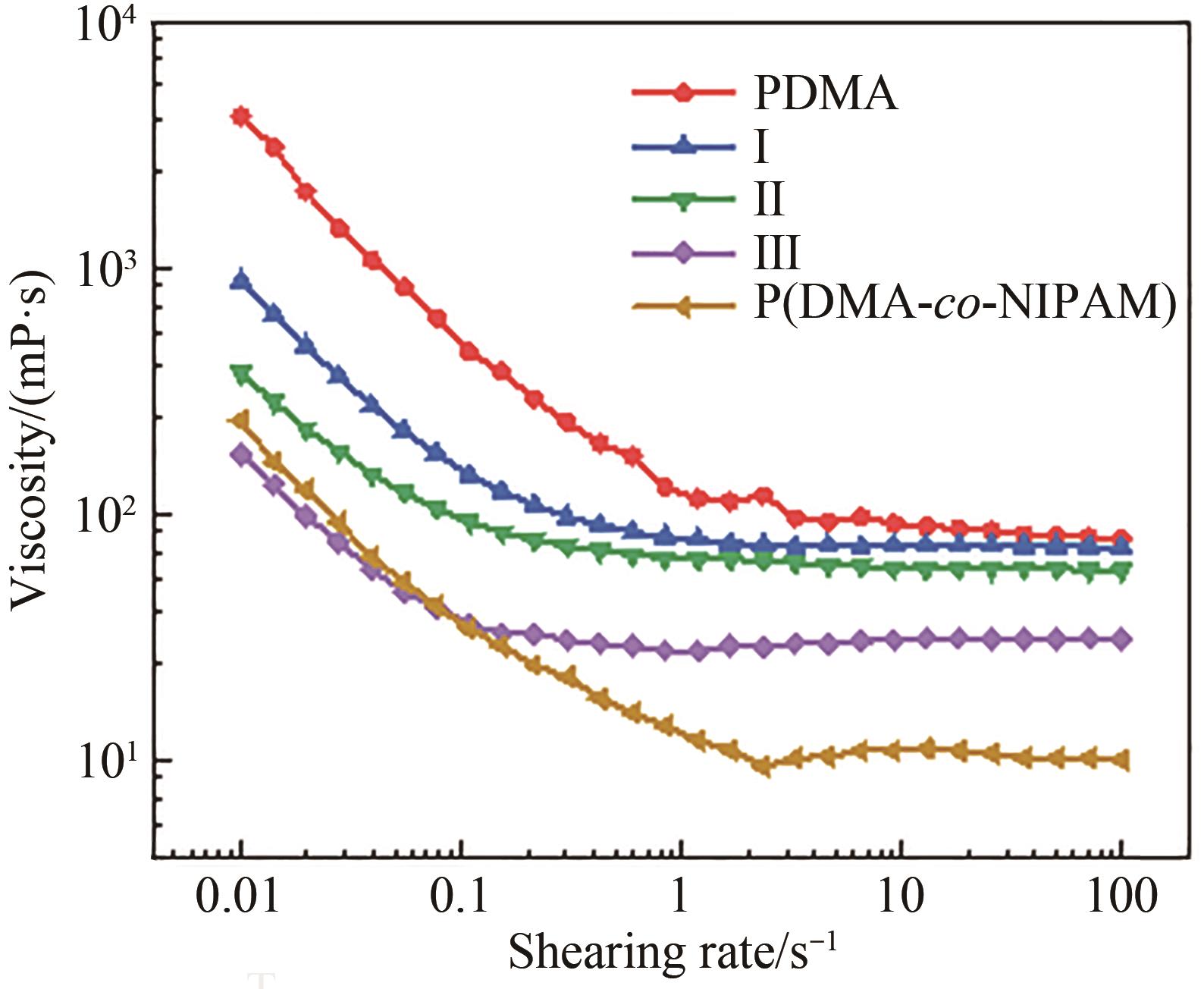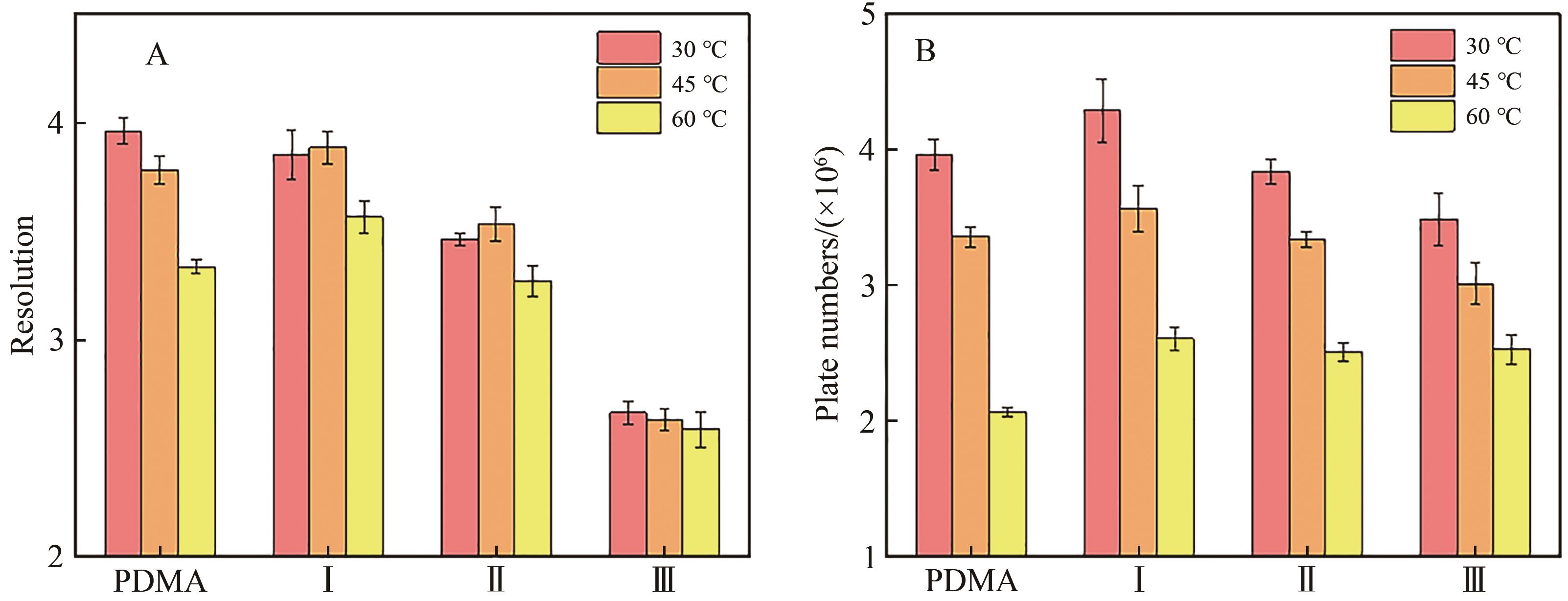
应用化学 ›› 2023, Vol. 40 ›› Issue (9): 1312-1321.DOI: 10.19894/j.issn.1000-0518.230125
基于温敏性N,N-二甲基丙烯酰胺/N-异丙基丙烯酰胺无规共聚物的毛细管无胶电泳筛分介质
- 1.中国科学院长春应用化学研究所,高分子物理与化学国家重点实验室,长春 130022
2.中国科学技术大学,合肥 230026
3.莱宝利复合材料科技有限公司,泰州 225321
4.公安部第一研究所,北京 100048
Thermoresponsive Poly(N,N-dimethylacrylamide-co-N-isopropylacrylamide) for Preparation of Composite Sieving Media in Non-Gel Capillary Electrophoresis
Feng-Hao JIANG1,2, Han HONG3, Bo-Wei JIANG4, Zhao-Hui SU1,2( )
)
- 1.State Key Laboratory of Polymer Physics and Chemistry,Changchun Institute of Applied Chemistry,Chinese Academy of Sciences,Changchun 130022,China
2.University of Science and Technology of China,Hefei 230026,China
3.Lifepolymer Composite Material Technology Co. ,Ltd. ,Taizhou 225321,China
4.The First Research Institute of the Ministry of Public Security,Beijing 100048,China
摘要:
本文合成了N,N-二甲基丙烯酰胺/N-异丙基丙烯酰胺无规共聚物(P(DMA-co-NIPAM))和聚N,N-二甲基丙烯酰胺(PDMA),并将二者共混制备毛细管无胶电泳筛分介质,旨在降低筛分介质粘度的同时增强其对DNA的分离性能。核磁共振氢谱(1H NMR)和傅里叶变换红外光谱(FT-IR)证明了2种聚合物的成功合成。表征了P(DMA-co-NIPAM)/PDMA共混物溶液的流体力学直径(Dh)、低剪切粘度和吸光度,结果表明,P(DMA-co-NIPAM)聚合物具有温敏性,低临界溶解温度(LCST)为60~80 ℃。DNA筛分结果显示,PDMA中添加了10% P(DMA-co-NIPAM)的复合筛分介质性能最好,相比PDMA粘度降低19%以上,对大DNA片段的分辨率和理论塔板数均明显提高,分离时间缩短4%,显示了优良的分离性能。
中图分类号:






